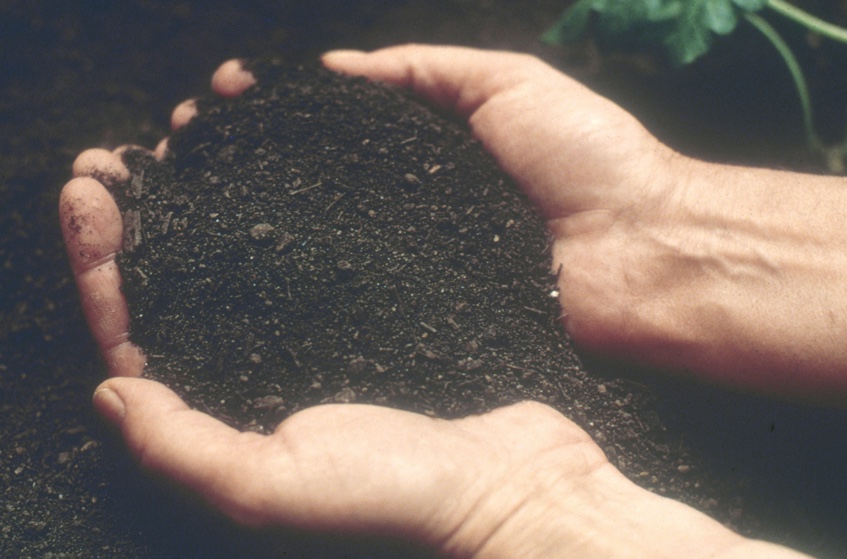The United Nations has declared December 5 as World Soil Day. Noting that “soils constitute the foundation for agricultural development, essential ecosystem functions and food security and hence are key to sustaining life on Earth,” the United Nations General Assembly created World Soil Day in 2014 and additionally declared 2015 as International Year of Soils.

Each World Soil Day features a theme highlighting a particular aspect of soil health. For 2022, the theme is “Soils, Where Food Begins.” According to the United Nations,
- 95% of our food comes from soils.
- 18 naturally occurring chemical elements are essential to plants. Soils supply 15.
- Agricultural production will have to increase by 60% to meet the global food demand in 2050.
- 33% of soils are degraded.
- Up to 58% more food could be produced through sustainable soil management.
December 5 was chosen as World Soil Day to honor the dedicated environmental work of the late king of Thailand, Bhumibol Adulyadej, who was born on December 5, 1927. At the time of his death in 2016, King Adulyadej was the longest serving monarch—70 years—and beloved by the Thai people for his humility and devotion to improving the lives of his fellow citizens. He was particularly interested in soil as the basis of rural prosperity, recognizing that the work of thousands of years of soil formation could be destroyed by a single thoughtless act of improper use.

King Adulyadej was an advocate of using vetiver grass (Chrysopogon zizanioides) to control soil erosion. Vetiver grass is a perennial with long vertical roots that is exceptionally useful for stabilizing soils on sloping hills. Starting in 1991, the king led experiments and demonstrations to develop the use of vetiver as a “miracle grass.” So promising was this work that The International Erosion Control Association awarded the king its International Merit Award in 1993. Later that year, the World Bank presented him with a bronze sculpture of a vetiver plant “for technical and development accomplishment in the promotion of the vetiver technology internationally.”
World Soil Day is overseen by the Global Soil Partnership, established in 2012. Their report on the “Status of the World’s Soil Resources” offers these sobering statistics:
- Over one-third of the earth’s ice-free surface has been cleared of natural vegetation, making it susceptible to erosion, loss of nutrients and biodiversity.
- If soil erosion continues at its current rate, by 2050 the earth will have lost the equivalent of the arable land of India.
- Increasing soil salinity has reduced productivity on agricultural lands the equivalent of the area of arable land of Brazil.
Fortunately, soil scientists and agriculturists know how to prevent further damage and reverse the damage that has already occurred. It’s dirty work, but someone has to do it!
References:
Food and Agriculture Organization of the United Nations. 2017. World Soil Day. Available at: http://www.fao.org/world-soil-day/en/. Accessed December 4, 2017.
Food and Agriculture Organization of the United Nations. 2015. Status of the world’s soil resources. UNFAO, Rome, Italy. Available at: http://www.fao.org/global-soil-partnership/resources/highlights/detail/en/c/357163/. Accessed December 4, 2016.
Food and Agriculture Organization of the United Nations. Undated. Global Soil Partnership. Available at: http://www.fao.org/global-soil-partnership/en/. Accessed December 4, 2016.
Global Pulse Confederation. Undated. Pulses. Available at: http://pulses.org/. Accessed December 4, 2016.
Office of the Royal Development Projects Board. 2000. The royal messages concerning vetiver: A miracle grass. Bangkok, Thailand. Available at: http://prvn.rdpb.go.th/files/royal%20messgaes_book.pdf . Accessed December 4, 2016.
Pacific Rim Vetiver Network. Undated. The King of Thailand and the miracle vetiver grass. Available at: http://prvn.rdpb.go.th/king.html. Accessed December 4, 2016.
United Nations General Assembly. 2014. World Soil Day and International Year of Soils, Resolution adopted by the General Assembly on 20 December 2013 (resolution 68/232). New York, New York. Available at: http://www.un.org/en/ga/search/view_doc.asp?symbol=A/RES/68/232. Accessed December 4, 2017.
